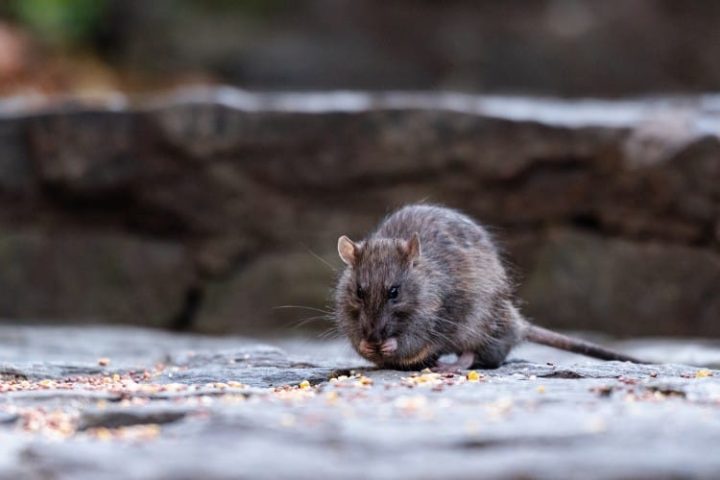
No one really knows the exact number of rats living in New York City (unless one means Gotham politicians). In fact, estimates range anywhere from two million to 72 million — which breaks down to roughly four people for every one rat to eight rats for every one person — proving that the rodents aren’t big on answering the census. But one thing may be certain, say many Big Apple residents:
The rat population has been exploding in recent times.
And while some may claim this is another gift from outgoing mayor Bill de Blasio (and he is complicit), the direct blame, say many, lies with the COVID-19-inspired al fresco dining that has become a fixture of city life.
As the BBC tells us, scurrying right to the story:
Diem Boyd was sitting outside a restaurant in New York’s fashionable Greenwich Village in September, when a family of rats scurried across her feet.
“Within seconds everybody jumped up,” she says. “We lost our appetite.”
Everyone in New York has a similar story to tell, she explains. “We have a complete and utter rat explosion.”
“You see them when you come out at night,” agrees Deborah Gonzalez, who, like Diem, lives in Manhattan’s Lower East Side. “When you walk on this block you see them running back and forth.”
It is difficult to gauge precise numbers, but calls to New York City’s complaints hotline mentioning rodents have jumped this year, 15% up on pre-pandemic levels.
It is true that all NYC denizens have their rat stories, including ones involving the four-legged variety. I grew up in the Bronx, and I occasionally saw the vermin, but usually while taking the subways or during trips to Manhattan. Anecdotally speaking, I’ll also say that I have observed a rat population increase, but one greatly predating coronavirus.
As a boy, I never, ever saw a rat in my old Bronx neighborhood, and, I can assure you, I was all over the place as a young lad will be. But I do at times return to my old haunts, and rats have been a problem in the neighborhood for approximately the last 15 years. (For one thing, there’s been much construction/excavation.)
Moreover, while the BBC article’s title is “If you eat here, you’re dining with rats,” this also is nothing new. Opening with the line, “New Yorkers with a rat phobia: Hope your most recent restaurant meal was absolutely delicious, because it might be your last,” Grub Street reported in 2017 that 63 percent of Big Apple restaurants have been cited for rodent infestation. So, no, NYC ain’t no Alberta. That Canadian province, believe it or not, is reputed to be completely rat-free.
(A NYC by-neighborhood restaurant rat map is here, but it is a bit dated — from 2014.)
Oh, and don’t think going to a high-end eatery will assuredly spare you Rattus norvegicus’s presence. I remember decades ago that one of then-mayor Ed Koch’s favorite restaurants made the news because it was found to have a rat issue. When subsequently asked about his previous touting of the establishment, the colorful Koch replied in his inimitable style (I’m paraphrasing), “I didn’t say anything about that! I just said the food was good — and it was!”
Returning to the present, and the present story, the BBC tells us that NYC’s now status-quo dining sheds — the city currently boasts more than 11,000 new outdoor eating spots — may be creating a rat Shangri-La.
The residents interviewed “say the [al fresco] shelters encourage ‘mile high’ piles of black plastic rubbish bags to accumulate at the roadside, and provide the perfect hideout for rats under the floorboards,” the BBC relates.
This situation has pitted the hospitality industry and its patrons — who rely on the al fresco option as a COVID-era lifeline — against local residents, who may consider the dining sheds a blight on their neighborhoods.
Some residents complain that the “open restaurants” plan — initially instituted by de Blasio as a temporary measure, but one he said late last year he wanted to make permanent — has increased noise and congestion. The aforementioned Gonzalez says that she and many residents supported a temporary al fresco solution because the hospitality industry was suffering, but that making it permanent is unacceptable. Many state that the outdoor dining facilities make it more difficult for elderly residents and emergency vehicles to negotiate, respectively, the sidewalks and streets.
For the restaurateurs’ part, they point out that while there are minor downsides, the dining sheds enrich neighborhoods by allowing eateries to survive and provide employment.
Of course, while a plague of rats sounds biblical, unsaid is that dining sheds likely wouldn’t be an issue if NYC dwellers didn’t elect the demagogic politicians who’ve peddled COVID panic porn. Just consider, for example, that the Omicron variant has killed not one American but is treated like the Black Death.
Also contributing to the problem is the Big Apple’s garbage collection, which, under de Blasio’s watch, has been lacking.
This said, not everyone is a rat-phobe. A New York Post writer wrote last month that he appreciates the rodent wave because it was keeping his rent down. And in 2016, Fox asked if you’d “eat a burger made with rat meat” while doing a story on how, supposedly, nutria (“river rat”) was a new food trend in Moscow.
My answer is no, by the way.
Actually, strike that.
It’s “NO!”
I have an expansive and adventurous palate, but that’s a bridge too far for me.
Rat is happily consumed, though, in other cultures, as the recipe video below evidences (warning: Not for those with weak stomachs!).
The comments under the above are precious, however, starting with: “This has helped me lose so much weight…,” writes the top-rated poster — “every time I get hungry I come and watch this video.”
But, heck, if I fixated on everything I know about what’s in our food, I’d just want to sit around like a plant and photosynthesize.
The good news is that people in our culture, even in NYC, don’t eat rat.
Well, not knowingly, anyway.



